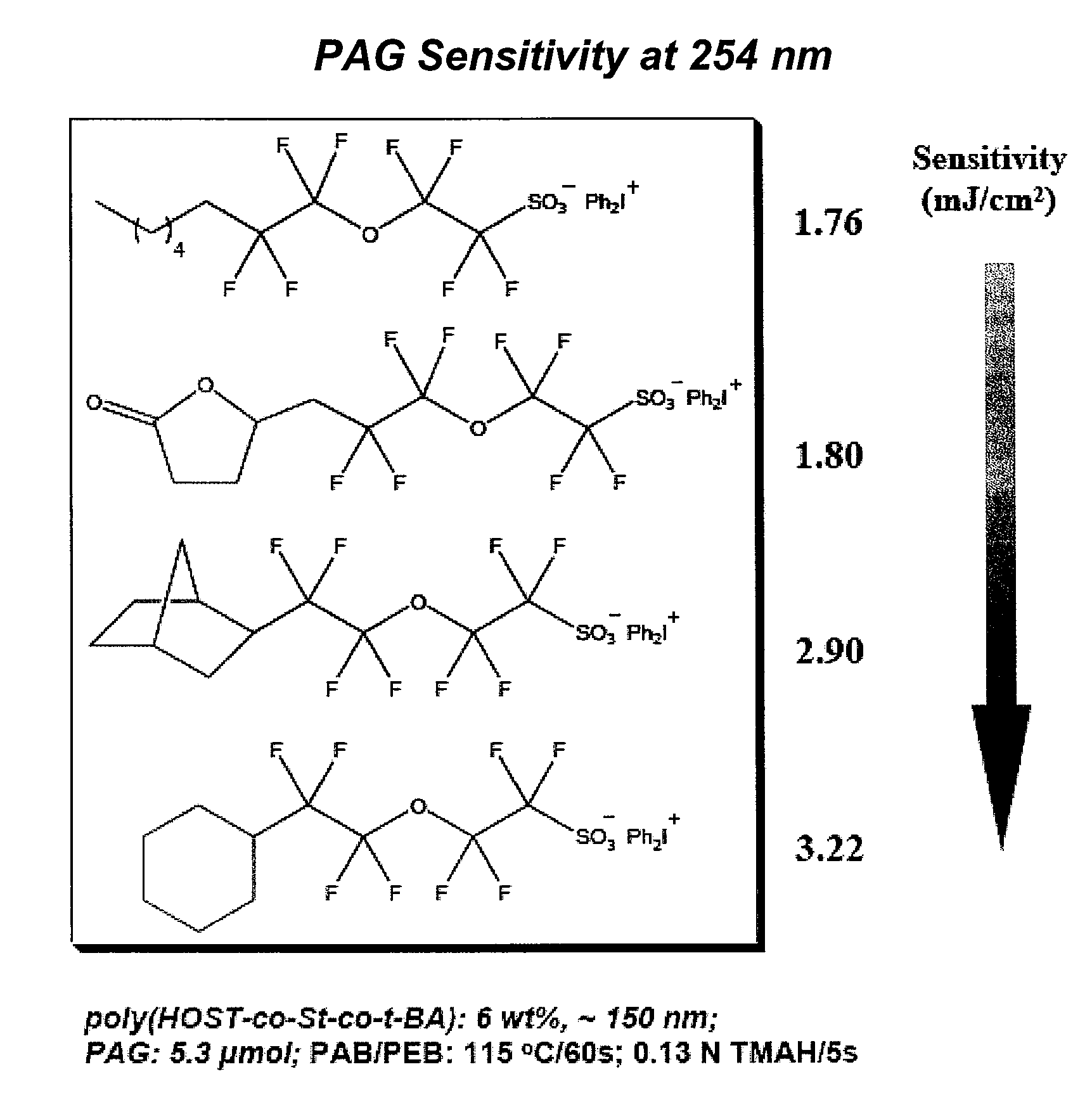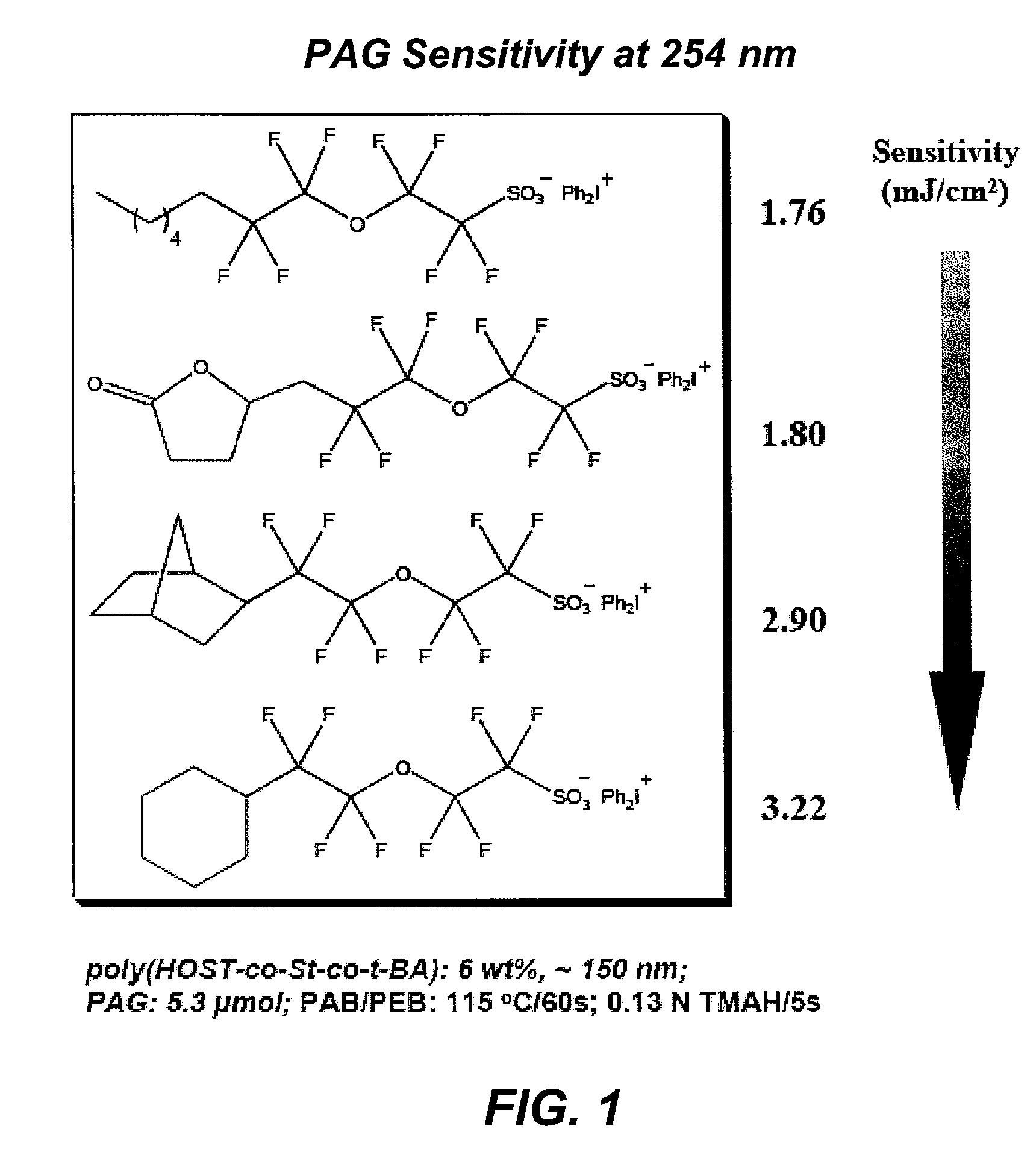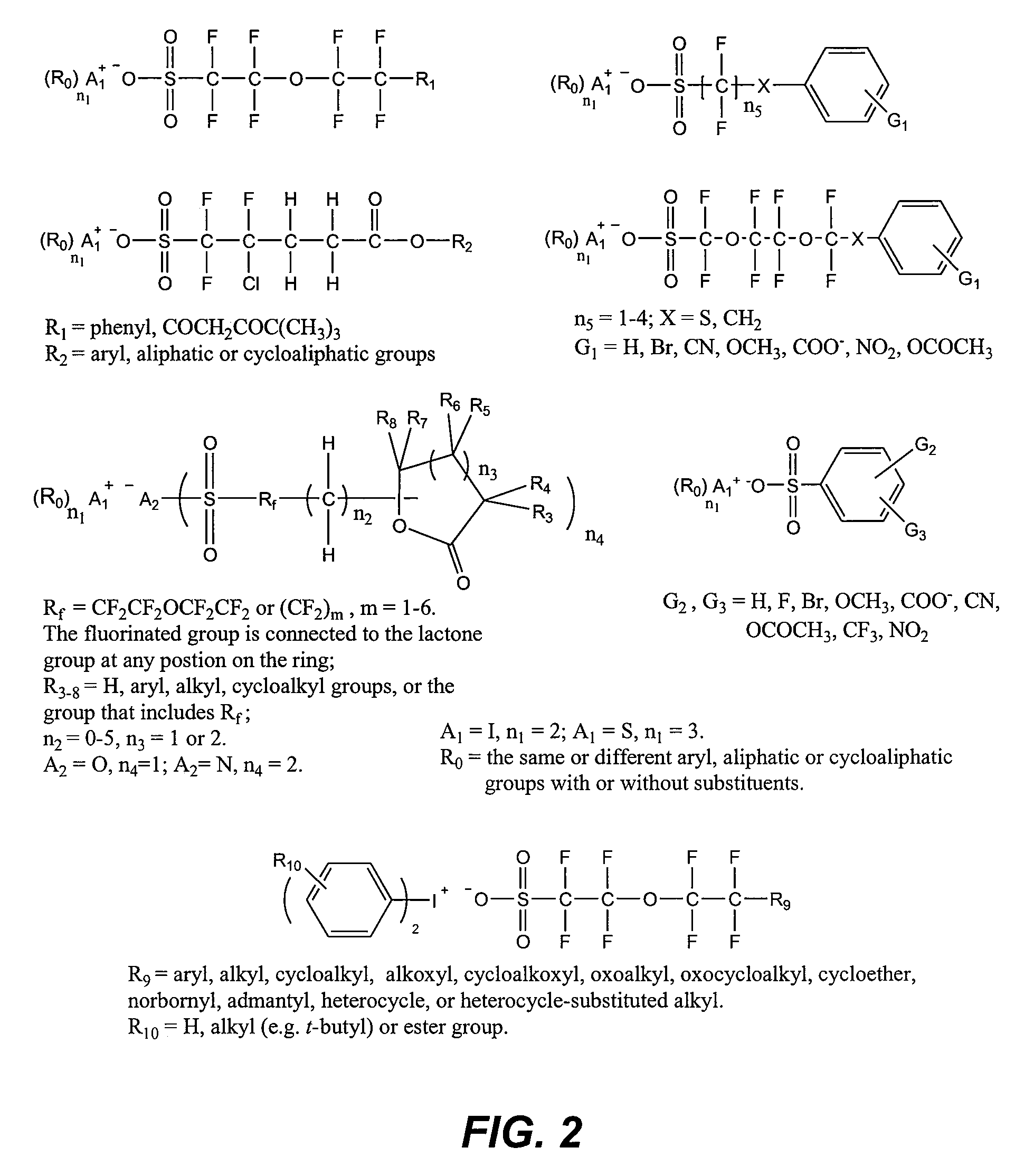Photoacid generator compounds and compositions
a generator compound and photoacid technology, applied in the field of photoacid generator compounds and compositions, can solve the problems of many of the most effective pags no longer commercially viable, and achieve the effects of reducing or eliminating the use of pfoss, and improving the homogeneous distribution of pag in the resis
- Summary
- Abstract
- Description
- Claims
- Application Information
AI Technical Summary
Benefits of technology
Problems solved by technology
Method used
Image
Examples
example 1
General Synthesis of an Ionic Photoacid Generator
[0143]Ionic photoacid generators according to various embodiments can be prepared as illustrated below in Scheme 1-1.
[0144]
[0145]The synthetic procedure to prepare ionic photoacid generator (1-IV) with a perfluorooxyalkyl group which is in turn attached to lactone ring via an alkyl linkage is summarized below. Reaction of halogen containing perfluorooxyalkyl sulfonyhalide (1-I) with alkali metal hydroxide results in perfluorooxyalkylsulfonate (1-II). Compound 1-III was obtained by reacting 1-II with the sodium salt of an alkenoic acid in the presence of dehalogeno-alkylating reagents. Finally an exchange reaction of sulfonate (1-III) with a photoactive cation in an aqueous or aqueous / organic solvent system affords new ionic photoacid generator 1-IV, wherein the variables are as defined in the Summary above.
[0146]See Hu and Qing, J. Org. Chem, 1991, 56, 6348-6351; Zou et al., Tetrahedron, 2003, 59, 2555-2560; Imazeki et al., Synthesis,...
example 2
Synthesis of an Ionic Photoacid Generator
[0164]Ionic photoacid generators according to various embodiments can be prepared as illustrated below in Scheme 2-1.
[0165]
[0166]Ionic photoacid generator VIII with a perfluorooxyalkyl group directly attached to an alkyl or cycloalkyl group can be synthesized as illustrated above wherein X and X′ are halo, R is alkyl, cycloalkyl, heterocycle, aryl, or heteroaryl, each optionally substituted with one to about five substituents. Sulfonyl halide V (commercially available or synthesized in one to about five steps) can be converted to compound VI by reacting with a substituted alkene in the presence of dehalogeno-alkylating reagents. Compound VI was converted to sulfonate VII by direct oxidation with an alkali metal hydroxide, for example, NaOH or KOH. The resulting sulfonate obtained was then subjected to an exchange reaction with a photoactive cation in an aqueous or an aqueous / organic solvent system to afford new ionic photoacid generator VIII,...
example 3
General Synthesis of an Ionic Photoacid Generator
[0168]Ionic photoacid generators according to various embodiments can be prepared as illustrated below in Scheme 3-1.
[0169]
[0170]A simplified synthetic procedure to obtain an ionic photoacid generator with a perfluoro or aryl group directly attached to the sulfonate group is described below. A sulfonyl chloride (commercially available or synthesized in one to about five steps) was converted to sulfonate either by direct oxidation with an alkali metal hydroxide or by hydrolysis followed by neutralization with silver carbonate. The sulfonate obtained was then subjected to an exchange reaction with a photoactive cation in an aqueous or an aqueous / organic solvent system to afford a new ionic photoacid generator, wherein R2 can be alkyl, cycloalkyl, heterocycle, aryl, or heteroaryl, each optionally substituted with one to about five substituents, and A1, (Ro), n1 can be defined as in Example 2.
[0171]See Feiring and Wonchoba, Journal of Flu...
PUM
| Property | Measurement | Unit |
|---|---|---|
| wavelength | aaaaa | aaaaa |
| dispersity | aaaaa | aaaaa |
| dispersity | aaaaa | aaaaa |
Abstract
Description
Claims
Application Information
 Login to View More
Login to View More - R&D
- Intellectual Property
- Life Sciences
- Materials
- Tech Scout
- Unparalleled Data Quality
- Higher Quality Content
- 60% Fewer Hallucinations
Browse by: Latest US Patents, China's latest patents, Technical Efficacy Thesaurus, Application Domain, Technology Topic, Popular Technical Reports.
© 2025 PatSnap. All rights reserved.Legal|Privacy policy|Modern Slavery Act Transparency Statement|Sitemap|About US| Contact US: help@patsnap.com



